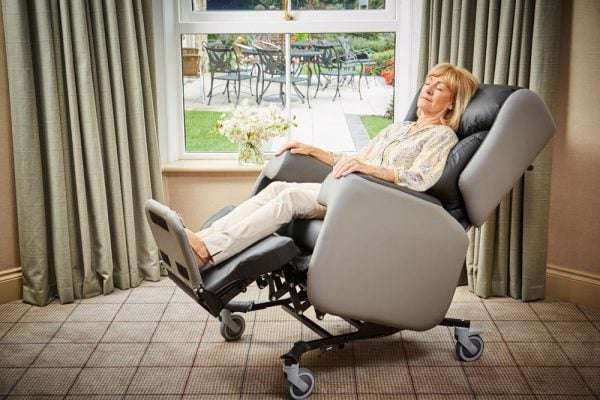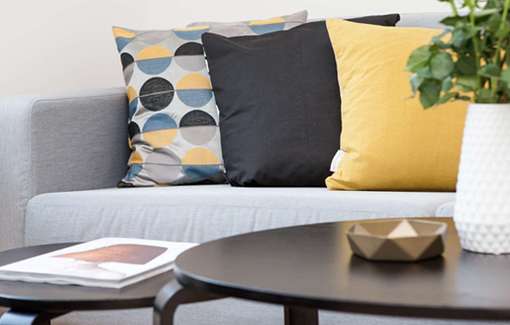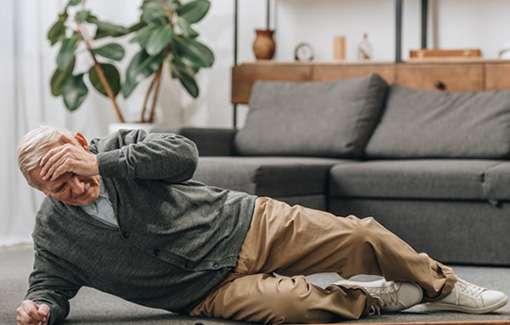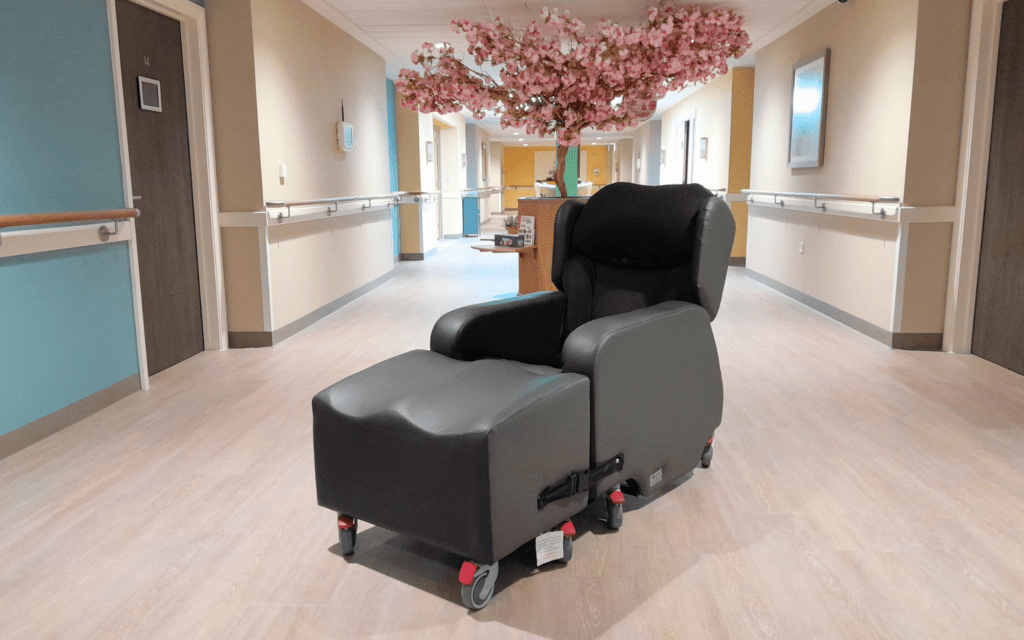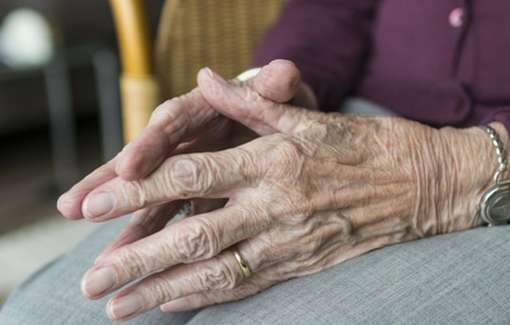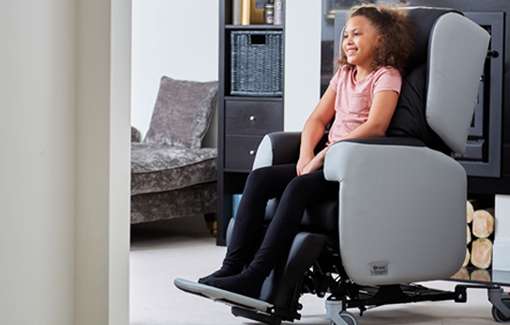Vivid.Care have been specifying care chairs for people with disabilities for decades. In 2015, we even started developing our own range of specialist seating. Over the last five years, we realised that many of the innovations in seating were catering to the needs of disabled adults rather than disabled children.
Since 2018, we’ve been working to fill some of the gaps in paediatric specialist seating. Today, our in-house Physiotherapist and Seating Specialist – Padraig Finn – has shared his insights on the importance of good seating for children with disabilities.

Padraig Finn, Physiotherapist & Seating Assessor
He outlines the potential risks of incorrect seat sizing and explains what features a care chair should have to support the health, development, and quality of life of disabled children.
Read the full interview…
Jump straight to…
Why is proper seat sizing important for children with disabilities?
Correct seat sizing is vital for any specialist seating — the custom fit is really the key to providing someone with the support they need.
If the seat isn’t sized correctly then you risk doing more harm than good. A chair that’s too wide can encourage leaning, whilst one that’s too narrow can cause friction and lead to tissue breakdown.
In children, the risks of getting it wrong are greater because they are still developing. This is especially true when it comes to posture.
If identified early, poor posture can often be corrected, or at least limited. But incorrect seat sizing puts the child at risk of developing further poor posture.
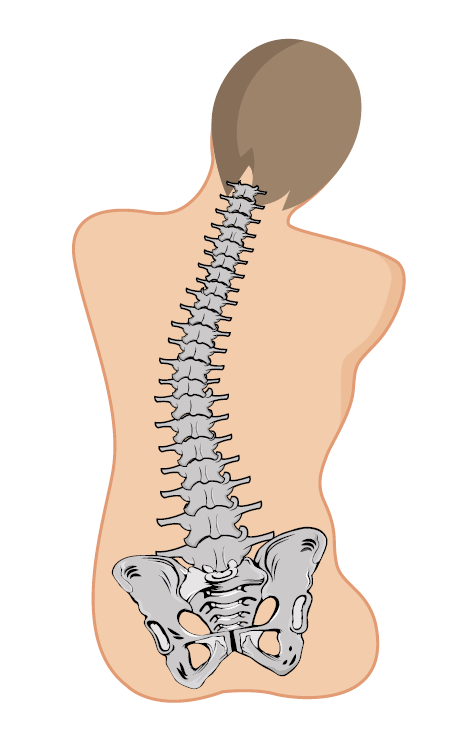
Prolonged leaning can cause permanent spinal deformities
This can lead to additional health problems such as restricted respiratory input, further curvature of the spine, shortening of muscles and increased pressure loading in specific areas.
In short, incorrect seat sizing can impede the development of children with disabilities. Whereas proper seat sizing will support their continued development, which is something every child deserves.
Adjustability is key
To give a specific example, head and shoulder positioning is possibly one of the hardest areas to correct when dealing with seating. So, when doing a seating assessment or sizing a chair for a child it is vital that you do not encourage the head forward.
When people see a gap between the neck and headrest, their instinct is often to fill it by adding in large cushions to support the head. Don’t do that. This forces the head forward. Forward head position makes it harder for a child to see what’s going on around them and engage with others. Over time, it can also lead to permanent curvature of the spine.
Instead, you want to look for a headrest that can be adjusted to accommodate someone’s head position — so one where you can change the shape of the head cushion or resize it by adding/removing padding.
From a physio’s perspective, head/shoulder positioning and support should always be considered with possible active physiotherapy treatment, e.g. lengthening of muscles, in mind too. If you’ve got something adjustable then it can be easily adapted as someone improves so the chair still works for them.
With children, having a chair that allows for sizing adjustments has the huge added benefit that the chair can grow with the child. In today’s world, this really helps with cost-effectiveness. One chair sees a child through most of their developing years. As funding for specialist care equipment is often limited, getting good value for money is key.
Innovations in Paediatric Seating
Our innovations in paediatric seating stem from our work on adult care chairs.
Lento — the world’s most flexible care chair?
We launched the Lento Care Chair in 2017. That was after two years of research, development, and working closely with OTs and other healthcare professionals.
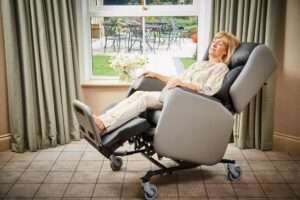
The Lento Care Chair is the first specialist seating solution developed by Yorkshire Care Equipment
It proved very popular in lots of settings because of the unique level of customisation.
The seat height, width, and depth, plus the footplate and armrest heights and the backrest cushion, can all be adjusted in minutes. The best part is that you don’t even need any tools — that’s usually what impresses people the most. It’s just so easy to adjust.
There are different backrest options and you can change the footplate angle or add different pressure relief cushions too. It’s also got functions like tilt-in-space, backrest recline and articulating leg rest elevation. It really is one of the most flexible chairs out there.
Our research found it fits around 80% of people.
Little Lento — the children’s care chair
After we’d developed the Lento, it made it more apparent that there weren’t enough flexible options for paediatric specialist seating. Children with disabilities and long-term conditions were not getting the same opportunities for enhanced quality of life as adults.
That’s when we began researching more into paediatric care chairs.
We’ve discussed how important adjustability is for children’s seating and the Lento had already been designed for total adjustability. So, towards the end of 2019, we then launched Little Lento.
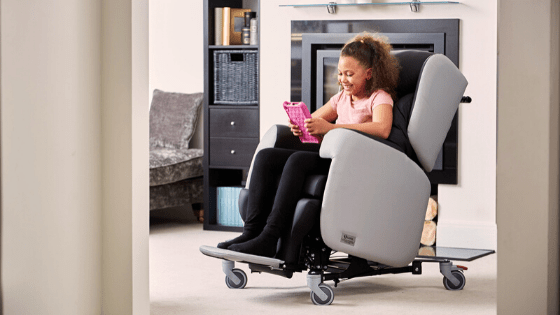
Little Lento is a modular, fully adjustable care chair for children
Little Lento is a versatile care chair solution, designed specifically for paediatric care.
All the features have been carefully adapted from the original Lento care chair. So, Little Lento has all the flexibility and clinical benefits of the adult model, but now the dimensions have been scaled down for paediatric care.
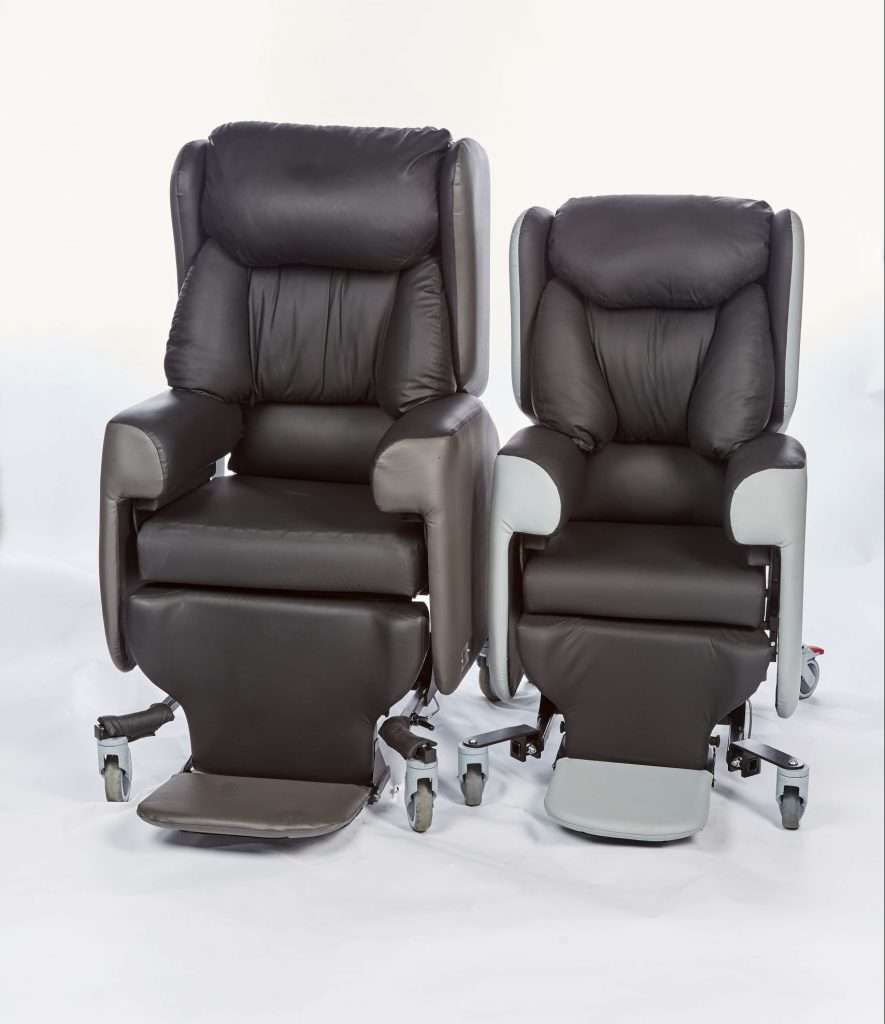
Seeing Lento and Little Lento side-by-side shows the difference in dimensions between the two care chairs
What’s different about Little Lento?
We launched Little Lento last year. Across the Vivid Care team, we’ve carried out a fair few paediatric seating assessments now.
Based on the feedback from our clients, these are the top five benefits of the Little Lento children’s care chair:
1) Adjustability
I’ve spoken about the importance of adjustability when specifying chairs for children throughout, and Little Lento is ultra-adjustable. That’s the standout feature for me. You can make adjustments for arm height, seat width, seat depth, leg length, back height, back angle and ankle positioning really easily. Paediatric chairs don’t always offer that level of flexibility, and if a chair is adjustable you often need special tools and training. That’s not the case with Little Lento.”
2) Comfort
One of the first things people comment on when they try Little Lento is how comfortable it is. A lot of paediatric chairs designed for postural support are uncomfortable if you’re sitting for long periods. But Little Lento is able to meet postural needs whilst still providing comfort.
3) The number of accessories
There’s a huge list of other accessories you can get to make Little Lento even more versatile. Things like hip guides, harnesses, thoracic laterals and profiled head cushions make it flexible enough to meet lots of different clinical presentations.
4) Value for money
For the amount of adjustability you get, Little Lento really is good value for money. Features you often pay extra for — like tilt-in-space plus back angle on the same chair — come as standard. Local councils, loan stores, and SEN schools in particular can make significant long-term savings. They can reuse the same chair time and time again by readjusting it to fit different children. The alternative is to by a bespoke chair for each child, which obviously ends up costing a lot more.
5) The look
Little Lento isn’t clinical looking. That’s something I find is often important for parents. They want their child to have a chair that feels like it belongs in the living room or their bedroom, rather than one that looks like it belongs in a hospital.
It’s available in lots of different colours too. So, kids love the fact they can personalise their chair and get it in their favourite colours.
Book a children’s seating assessment
If you’d like to book an assessment with Padraig or one of our other experienced seating specialists, please do get in touch! We are currently offering video and phone appointments to help people understand their options and find the right chair for them. Next-day and contact-free delivery options available.





